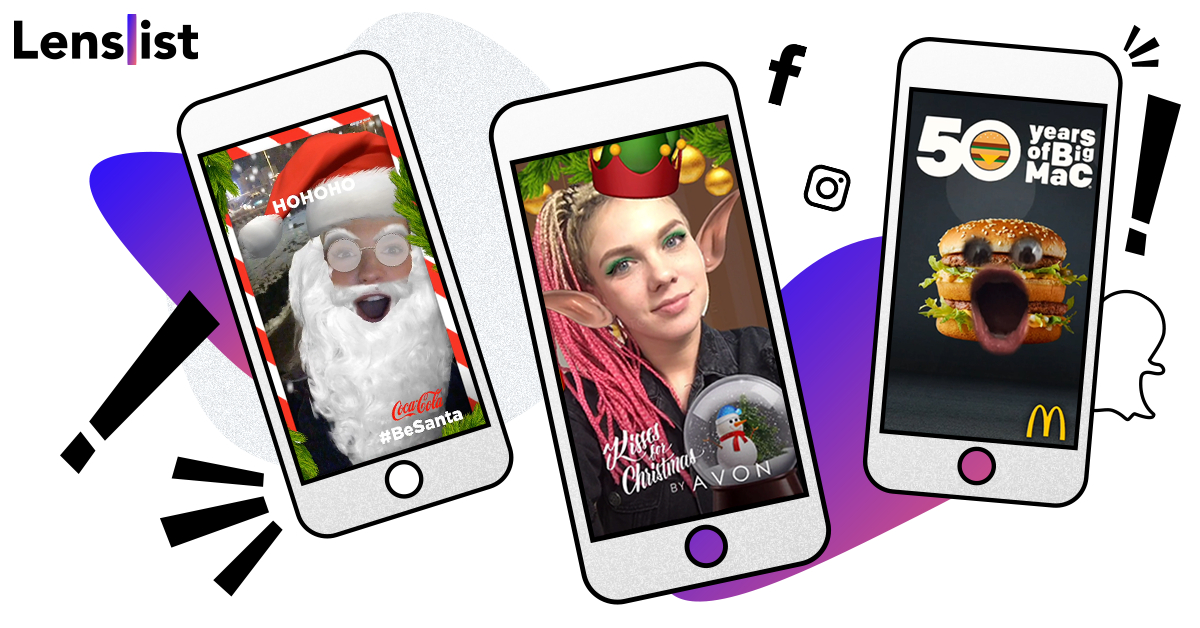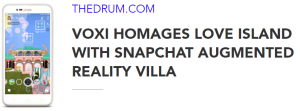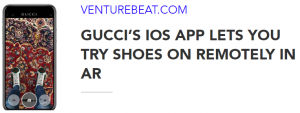Influencer AR Mixed Marketing – Emergence of a New Social Media Market

If you are interested in knowing more about Caroline’s story, we have conducted an extensive interview with her that you can read here.
AR Creators
Since there is no default way to promote AR content for now, AR creators need to deal with this task themselves, and as in every community, there are a few gems here as well. Marc Wakefield, Piotar Boa, Chris Price, and Johanna Jaskowska each contribute a lot to the expansion of the AR community by posting creative content and pointing the eyes of their followers to the most important things related to the development of Augmented Reality. Enough to say that the accounts of the four aforementioned Spark Creators have around a million and a half of followers combined.
Media Platforms
By far the widest channel allowing the exchange of information with the audience from outside of the AR community are media platforms, delivering fresh content on a daily basis. The undeniable advantage of this particular mean of transferring information is the practice of dumbing down the end-message, allowing people off the AR topic to process even the most complicated details on a technological aspect of augmented reality. There are several examples of such platforms contributing to the booming of AR trends, with websites like TheDrum.com, VentureBeat.com, or Wired.com at the forefront.
The In-Between Phase
Although AR tech hasn’t reached its full potential yet, and the community is in the in-between phase, there are examples of digital agencies out there that already mix a little bit of Influencer Marketing with branded effects. Lens That is one of those agencies, as they have successfully run social media campaigns using Instagram accounts of polish Influencers to spread AR-infused content for Coca Cola, Avon, and McDonald’s.
Emergence of a New Social Media Market
All of the actions taken within the current and in-between phase lead to the formation of a new market within the social media marketing category. Let’s assume a theoretical situation to better describe how, in our opinion, the ARI services will be delivered.
Suppose that brand A is looking forward to implementing a social media campaign using branded Facebook, Instagram, or Snapchat effect that will promote the launch of A’s newest product. However, brand A has already got some experience with AR technology, as in the past it run a similar campaign using custom branded lenses. Unfortunately, the KPIs and traffic level were not satisfactory enough and met the presumed levels only partially. Thus, company A seeks a piece of advice at a trusted digital consulting company and learns that in order to make this kind of campaign more efficient, it is crucial to communicate with their audience indirectly, simply to make the experience more organic. As it turns out, company X specializes in tackling this kind of issues. Not only does the company X deliver high-quality AR content, but has also created a vast database of contracted influencers on all of the biggest social media platforms that act as mediators between brand A and its digital target audience. The rest is just as simple as that: company A places an order on a previously agreed AR concept, picks the desirable amount of the most suitable influencers, depending on the targeted audience and the type of content and selects the expected minimal/maximal reach of the campaign.
Once digital marketing agencies will start taking such orders, with influencers conquering the world of organic marketing using branded effects, ARI will imminently expand. The development of Augmented Reality analytics tools, AR campaigns run on a global scale, further extension of the functionality of the development platforms like Spark AR, or even the appearance of the new generation of AR creators and developers are all meant to propel the introduction of innovative marketing techniques.
This is what we, the Lenslist team, think will happen in the nearest future. There are more than enough evidence that confirms our forecasts that soon entrepreneurs worldwide will derive from the potential of mixing influencer and AR marketing techniques. Of course, this still might take months, maybe even years, until such practices will become a common thing among the top tier marketers. Until then, there is not much left to do except for acting bald, experiment, and pioneer our way through, while simultaneously following a Latin sentence “per aspera ad astra”, or: “through hardships to the stars”.
Thanks for the read and see you in the next one!


